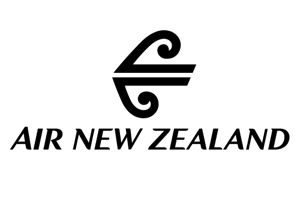
Aircraft of the Air New Zealand Group
Background Information.
Air New Zealand Limited was formerly known as Tasman Empire Airways Ltd (TEAL) . The Company was formed by an Intergovernmental Agreement for Tasman Sea Air Services (also known as the Tasman Agreement), a treaty signed by the United Kingdom, Australia and New Zealand in London on April 10, 1940.
TEAL was first registered in Wellington as a company on April 26, 1940 The company's purpose was originally to transport mail, passengers and cargo across the Tasman Sea between Australia and New Zealand during World War II. The treaty was originally intended to end within 3 months after hostilities with Germany ended, however it was extended in 1949 and finally ended on March 31, 1954 with control and ownership passing into normal commercial arrangements.
The shares were originally held by the New Zealand Government (20%), Union Airways of New Zealand (19%), British Overseas Airways Corporation (38%) and Qantas Empire Airways (23%).
The first service from Auckland to Sydney on April 30, 1940 was operated by Short Brothers S.30 C Class Empire Flying Boat ZK-AMA 'Aotearoa', one of a fleet of just 2 aircraft. The New Zealand aircraft connected in Sydney with the BOAC / Qantas Empire Airways route to Great Britain, which meant that for the first time, there was a regular through air service between New Zealand and Britain.
In the first year of operations, TEAL’s annual report revealed that 130 Trans Tasman flights had been completed carrying 1,461 passengers for a profit, prior to tax and dividends, of NZ£31,479. In 1946 TEAL introduced the Short Brothers S.25 Sandringham, with 4 aircraft joining the airline. The Empire Boats were retired in 1947, and the Sandringhams, after extended issues with their engines, were in turn replaced by a fleet of 4 Short Bothers S.45 Solents. This was later increased to 5 aircraft.
In 1953 ownership of TEAL was changed to equal shareholdings by the Governments of New Zealand and Australia.
With the demise of British Commonwealth Pacific Airlines in 1954, the Solents were replaced with a fleet of 3 Douglas DC-6 landplanes. Just one Solent was retained for services to Apia in Western Samoa, Aitutaki in the Cook Islands and Papeete in Tahiti. By September 1960 the golden age of flying boats was over for TEAL.
Further upgrades of aircraft occurred in late 1959 with the addition of the Turbo Prop Lockheed Electra and TEAL were on their way into the jet age.
In 1965 the New Zealand Government purchased the Australian shareholding, and the airline became wholly New Zealand owned. The name of the company was changed to Air New Zealand Ltd, to better reflect this ownership change and to signify to the world that the airline was now able to stand on its own feet. At the same time the first few of an eventual fleet of 7 Douglas DC-8-52 pure jets arrived, and in a short time, Air New Zealand’s route network expanded into North America, Singapore and Hong Kong.
On April 01, 1978 Air New Zealand was merged with New Zealand National Airways Corporation (the domestic carrier) and by 1989 the now large airline was privatised with a sale to a consortium headed by Brierley Investments Ltd with the remaining shares being held by Qantas, Japan Airlines, American Airlines and the New Zealand Government. In 1995 Air New Zealand purchased 50% of Ansett Australia.
In March 1999 Air New Zealand became a member of the Star Alliance, and during the remainder of 1999 and well into 2000, Air New Zealand became embroiled in an ownership battle over Ansett with co-owner, News Limited, over a possible sale of the under-performing carrier to Singapore Airlines.
In the year 2000 Air New Zealand finally purchased the remaining 50% of Ansett. This decision was questioned at the time, and in the event, by September 2001, plagued by costs it could not possibly afford, the Air New Zealand / Ansett Group neared collapse. A failed attempt to purchase Virgin Blue was the final straw and on September 12, 2001 Air New Zealand placed Ansett Australia into voluntary administration, forcing Ansett to cease operations. Air New Zealand announced a NZ$1.425 billion operating loss.
In October 2001 Air New Zealand was re-nationalised by the New Zealand Government's NZ$885 million rescue plan under which Air New Zealand received new leadership. This prevented the airline from going into administration, without which it would probably also have been grounded. In 2002 the New Zealand Government received an offer from Qantas to purchase a one fifth holding in Air New Zealand but the offer was rejected, and in 2003 New Zealand’s Airline turned a profit ofNZ$165.7 million for that year.
Air New Zealand established a low-cost airline which operated services to six destinations in New Zealand, five in Australia and one to Fiji. Freedom Air International was formed as South Pacific Air Charters by Mount Cook Airline and commenced operations on December 08, 1995 in response to the discount services being provided by Kiwi Airlines. The airline was based at Auckland Airport and operated until March 30, 2008 when its services were replaced by Air New Zealand flights.
The airline had grown dramatically and over the next few years, through a series of mergers and acquisitions, Air New Zealand gradually became an airline to be reckoned with and has gone on to win numerous accolades and awards for their fine service, now seen in Europe, the Americas, Canada, Japan and South East Asia as well as throughout their original territory to Australia and the South Pacific.